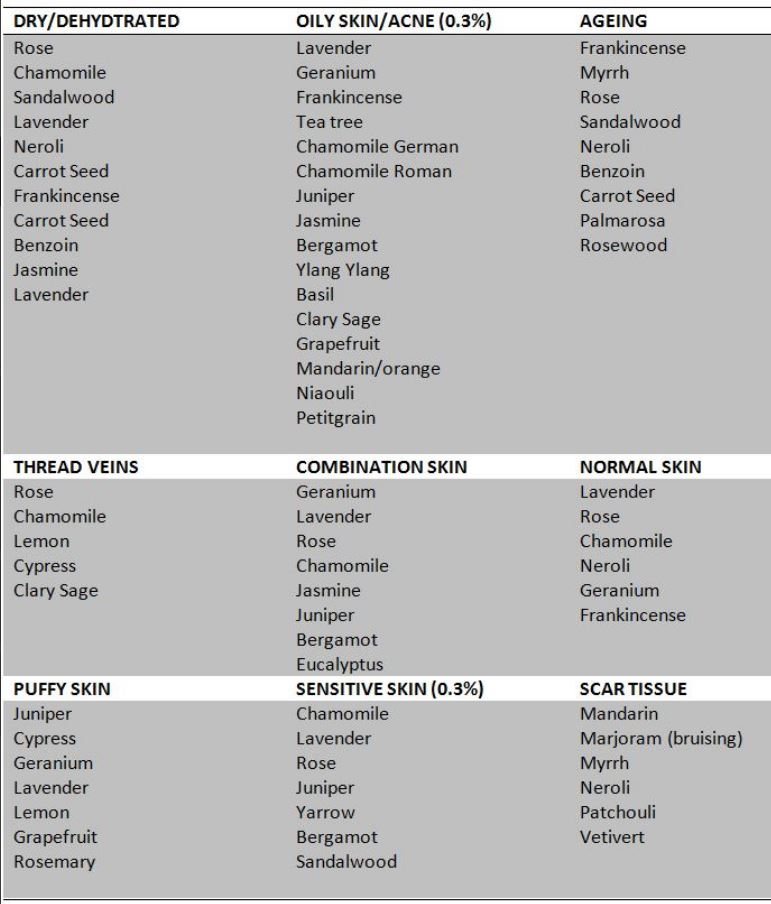Essential Oil Skincare Chart, Allergens and Other Considerations
It is often difficult to decide which essential oils are good for different skin types, so here is a list to help you decide. Please note that there are further restrictions on some of these oils.
Lemongrass is very high in citral content (90%) which is a strong irritant and best to use in very small quantities. If used on its own it is recommended to be used up to 0.7% but care has to be given when combining with other oils with citral content as this would increase the overall amount in the formulation.
Rose oil is beautiful but high in methyl eugenol which is thought to be a carcinogen. It is restricted to 0.05% in leave-on products and 0.10% in wash-off products.
Note on Citrus Oils
Having looked at most of the citrus oils i.e. bergamot, sweet orange, lime, lemon, tangerine, mandarin, grapefruit, it appears that some are phototoxic in their expressed form and not so in their distilled form. That is apart from sweet orange, which is neither phototoxic in expressed or distilled form. Similarly, tangerine and mandarin are typically expressed but are not phototoxic.
Most citrus oils contain enough limonene to cause irritation to the skin when oxidised so care should be taken to make sure they are stored correctly and used in good time. In general it is better to use the distilled version when it comes to citrus oils, especially in leave on products.
Bergamot (Citrus bergamia) is phototoxic which means that if you use it and go in the sun it is likely to cause irreparable skin damage. There are FCF/bergapten free varieties which, in terms of phototoxicity, are safe to use.
A useful book to get is Robert Tisserand’s 'Essential Oil Safety' which gives detailed research-based information on safety information of most commonly used essential oils.


